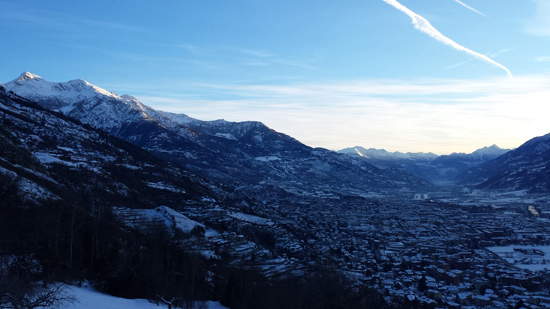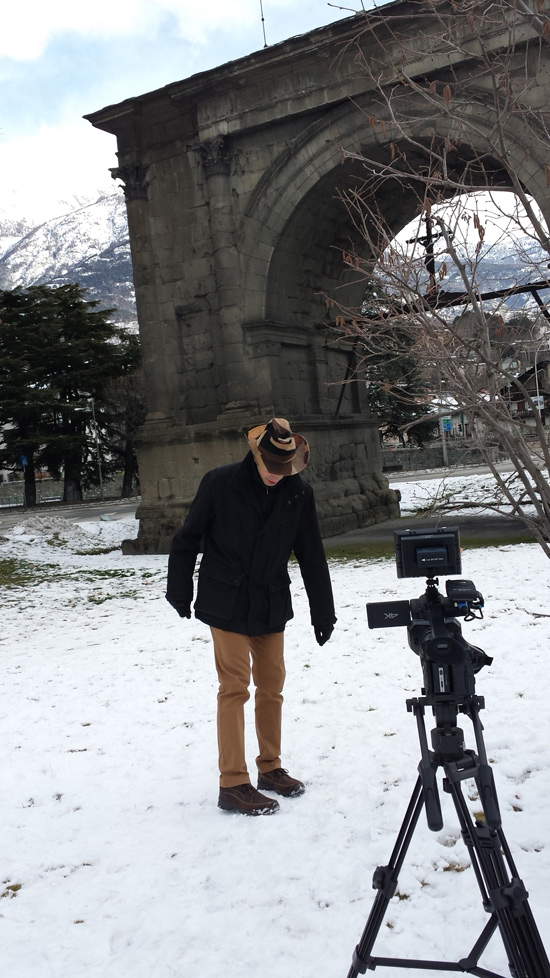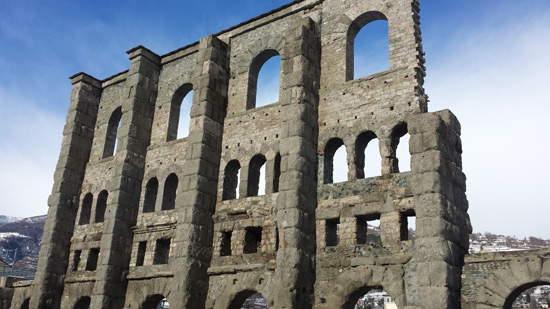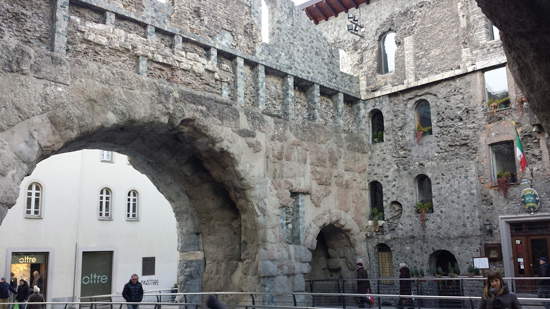Discovering Aosta
There is a saying that all roads lead to Rome, and that is where I want to take you in this new installment of Pronti Partenza Via, but not to the Capital, but to the so-called Rome of the Alps: Aosta. How come this appellation? Take a look at this installment and you will find out!
The capital of Italy’s smallest region rises right in the middle of its territory, on a plateau, surrounded by the very white and very high Alpine peaks. This location must have been truly enchanting when the Romans arrived here, who did not think twice about fighting with the indigenous people of the Salassi Gauls, defeating them and founding Augusta Pretoria here, a very important strategic outpost.
 |
| The valley of Aosta |
 |
| View of the city from the Tower of the Balivi |
To celebrate the founding of the city, very important monuments dedicated to the Emperor Augustus were erected: a triumphal arch marking the entrance from Rome placed immediately after crossing the bridge over the Butier stream, a theater, an amphitheater, the baths, the forum, and a quadrilateral wall perimeter of 727 by 574 meters, accessible by four gates placed along the paths of the cardo and decumanus on which the city’s urban planning was traced.
What remains today of all this? Surprisingly a great deal: the Arch of Augustus, albeit with the modifications of the time, stands triumphant; the Roman bridge is still solid and passable (with no stream passing under it anymore); the Roman theater is largely visible, with the high pierced wall rising elegantly among the ruins of the cavea. Little or almost nothing remains of the amphitheater, incorporated into the medieval masonry of a monastery, but the Praetorian Gate remains, with its double curtain wall and the three on the arches, vehicular in the center and pedestrian on either side.
 |
| Fabricius in front of the Arch of Augustus |
 |
| The Roman theater |
 |
| Praetorian Gate |
A number of patrician villas arose outside the walls, and it is still possible to visit one, whose mosaic floors and wall layouts, arranged around the central allimpluvium, are very well preserved: this is the Villa di Regione Consolata, a short walk from the city’s historic center.
In medieval times the city was fortified, the wall perimeter underwent transformations, and towers were raised and transformed into feudal residences. With the exception of the aforementioned Pretoria Gate, the other three entrances to the city are no longer visible. In fact, in order to be able to observe their sediment, it is necessary to explore the basements of some of the buildings that have risen over time on them.
If we then wanted to continue the underground journey we would find many gratifications by observing the well-preserved forensic cryptoporticus, what remains of the forum, on which the cathedral stands today and where a Roman temple once stood.
West of the city walls arose from the 10th century onward the medieval complex of SantOrso dedicated to the founding bishop as well as the city’s patron saint. Very interesting is the cloister attached to the Collegiate Church with its unusual 15th-century facade.
Exploring the attic of the church, as well as that of the Cathedral, it is possible to observe what remains of a pictorial cycle that previously adorned the walls of the two religious buildings, two of the most extensive testimonies of early medieval painting that make Aosta one of the main centers of Ottonian art in Europe.
Around these places of worship located outside the city walls a suburb arose that in time became distinct from the Cité. It is here that, according to tradition, valley dwellers have been gathering since the 11th century for the famous “St. Bear Fair” on January 30 and 31. This age-old festival still culminates in the Vaillà , the night between January 31 and February 1, the feast day of SantOrso. The city hosts hundreds of artists and artisans from Valle d’Aosta who display their works in the streets of the city center. Despite the bitter cold, it is pleasant to participate in this beautiful occasion: stroll through the illuminated streets where you can listen to music and participate in Aostan folklore and then seek warm shelter in a tavern where you can end with a nice hot meal of typical Valdostan products, including a valpellinentze soup, refreshed by an alcoholic drop of genepy.
Don’t miss the opportunity to visit our beautiful Italy during these popular festivities, these are times when the townspeople give their best to welcome visitors and you will savor the art of traveling under the best aspect, that of celebration.
 |
| Collegiate Church of Saint Bear |
Warning: the translation into English of the original Italian article was created using automatic tools. We undertake to review all articles, but we do not guarantee the total absence of inaccuracies in the translation due to the program. You can find the original by clicking on the ITA button. If you find any mistake,please contact us.




























